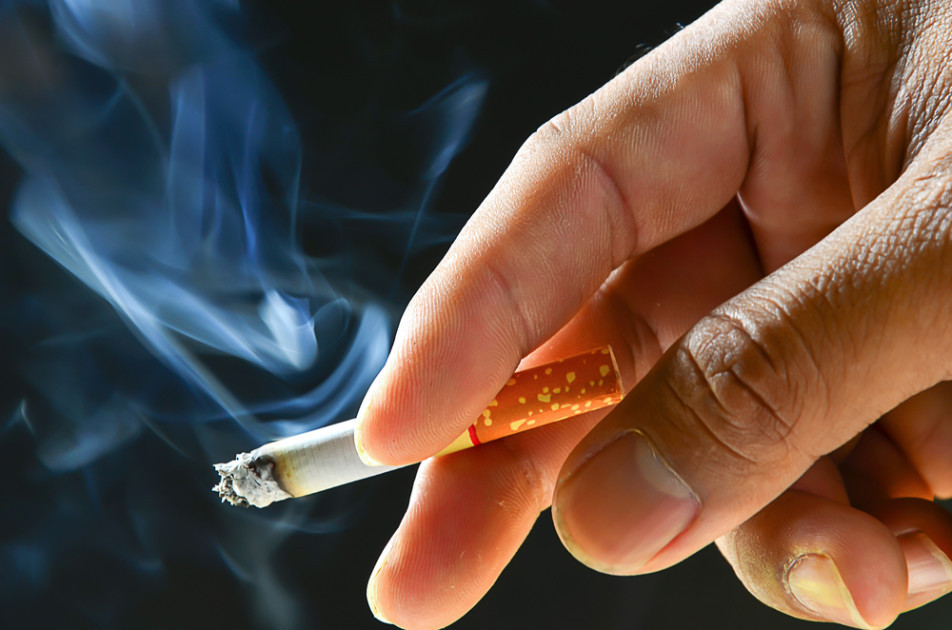
The Ministry recently submitted a dossier to the Ministry of Justice for appraisal of the draft amendment. In it, the Ministry of Finance has outlined two potential tax increase schedules for cigarettes from 2026 to 2030:
+ Option 1: 2,000 VND/pack (2026), 4,000 VND/pack (2027), 6,000 VND/pack (2028), 8,000 VND/pack (2029), 10,000 VND/pack (2030).
+ Option 2: 5,000 VND/pack (2026), 6,000 VND/pack (2027), 7,000 VND/pack (2028), 8,000 VND/pack (2029), 10,000 VND/pack (2030).
The tobacco production and consumption association, along with tobacco companies, have suggested a slower tax increase and a lower absolute tax rate than both proposed options.
Conversely, the Ministry of Health, the World Health Organization (WHO), the World Bank, and several health advocacy organizations support Option 2 and have proposed an even higher third option. This option includes a 75% ad valorem tax and an absolute tax rate of 5,000 VND/pack in 2026, increasing to 15,000 VND/pack by 2030.
The Ministry of Finance has considered various factors such as the increasingly low price of cigarettes relative to income, leading to higher tobacco consumption, and the healthcare costs associated with tobacco-related diseases, which amount to 1 billion USD annually in Vietnam.
According to Option 2, the smoking rate among men could decrease from 42.7% in 2022 to 38.6% by 2030. The tax share of the retail price would increase from 36% in 2022 to 59.38% by 2030.
"Option 2 is likely to reduce consumption more quickly and substantially, approaching the target of reducing the smoking rate among men aged 15 and older to below 36% by 2030, as outlined in the Tobacco Harm Prevention Strategy, and aiming for the WHO's recommendation of a 75% tax share of the retail price," according to the Ministry of Finance.
The third option proposed by health advocacy groups could better meet the objectives of reducing consumption and increasing product prices but would significantly impact businesses. The proposals from the Vietnam Tobacco Association suggest a minimal increase that would not strongly influence consumption reduction and would not meet strategic goals.
Thus, the Ministry of Finance leans towards Option 2.
Increased taxes on alcohol
The draft amendment also includes two options for increasing the tax rate on alcohol:
For alcohol above 20 degrees:
+ Option 1: Increase the tax rate from the current 65% to 70%, 75%, 80%, 85%, and 90% annually from 2026 to 2030.
+ Option 2: Increase the tax rate from the current 65% to 80%, 85%, 90%, 95%, and 100% annually from 2026 to 2030.
For alcohol below 20 degrees:
+ Option 1: Increase the tax rate from the current 35% to 40%, 45%, 50%, 55%, and 60% annually from 2026 to 2030.
+ Option 2: Increase the tax rate from the current 35% to 50%, 55%, 60%, 65%, and 70% annually from 2026 to 2030.
For beer:
+ Option 1: Increase the tax rate from the current 65% to 70%, 75%, 80%, 85%, and 90% annually from 2026 to 2030.
+ Option 2: Increase the tax rate from the current 65% to 80%, 85%, 90%, 95%, and 100% annually from 2026 to 2030.
The Ministry of Health, Ministry of Home Affairs, Ministry of Public Security, and several localities (Yen Bai, Quang Binh, Quang Tri, Vinh Long, Lang Son, Quang Ngai, Bac Ninh, Phu Yen), along with WHO and health advocacy organizations, support Option 2.
In contrast, the Vietnam Beer-Alcohol-Beverage Association and alcohol companies suggest a slower tax increase. Heiniken Vietnam and the Asia Pacific International Spirits & Wines Alliance propose an absolute tax based on alcohol content for beer.
The Ministry of Finance's analysis suggests that with Option 2, prices will rise by approximately 10% in 2026 compared to 2025, and by 2-3% annually thereafter, aligning with inflation and income growth. Option 2 is expected to reduce the affordability of alcohol and curb consumption more effectively, mitigating the related harms.
The Ministry of Finance leans towards Option 2.
Luong Bang